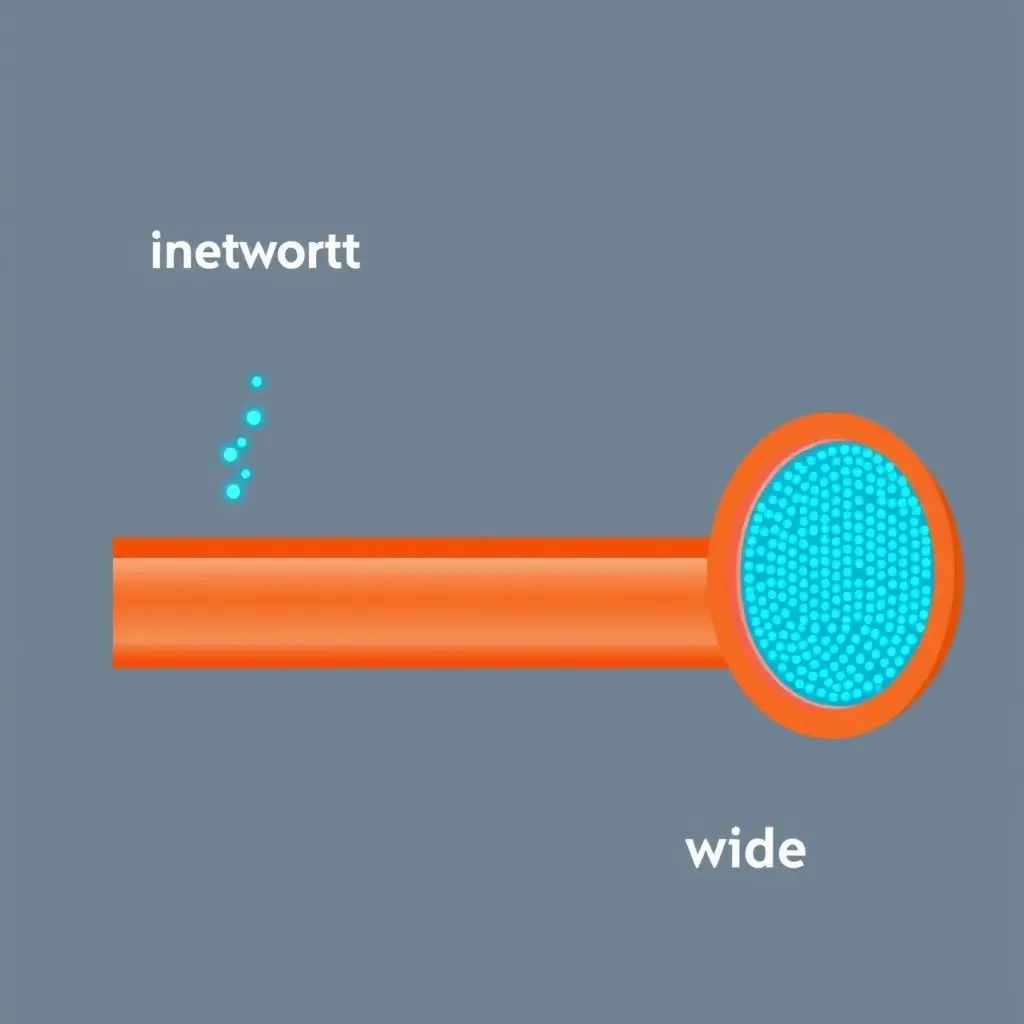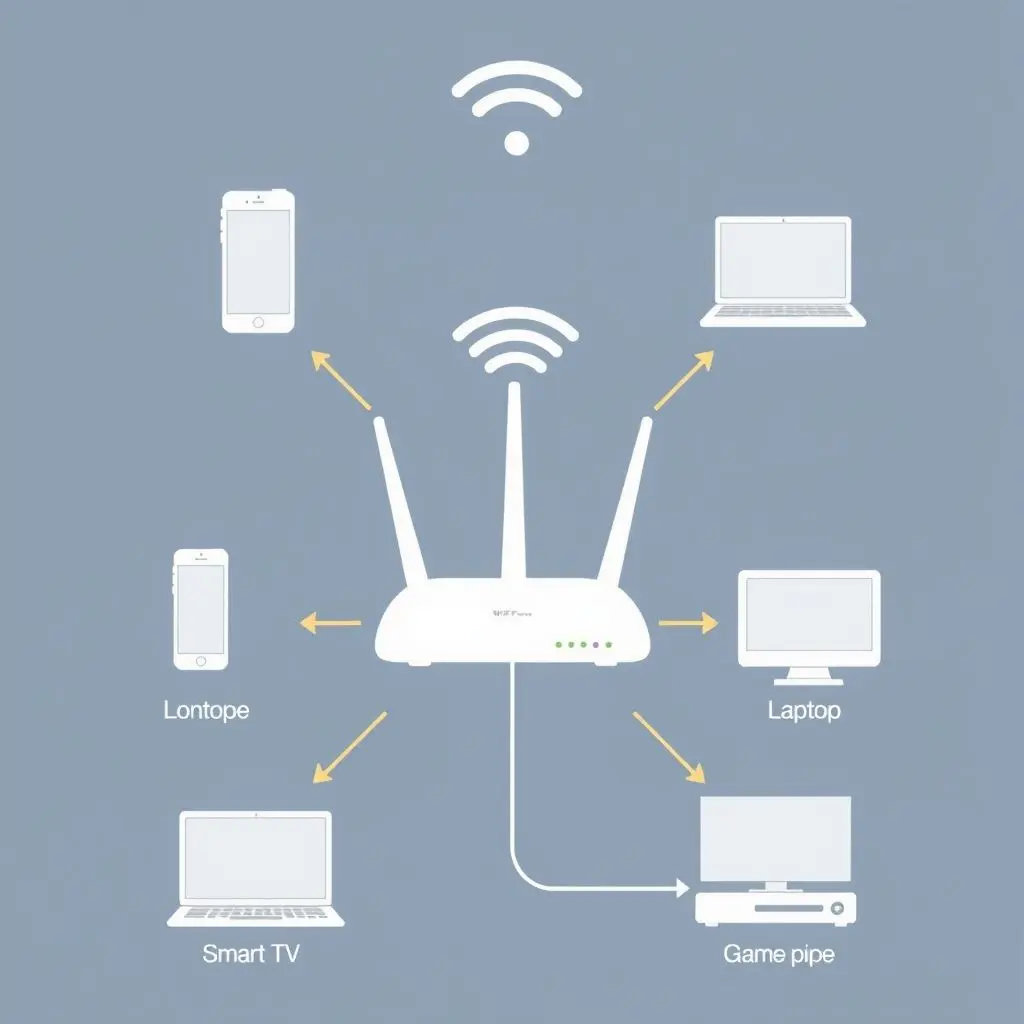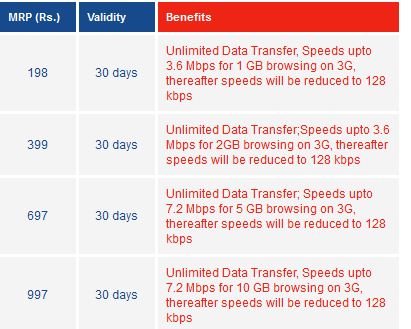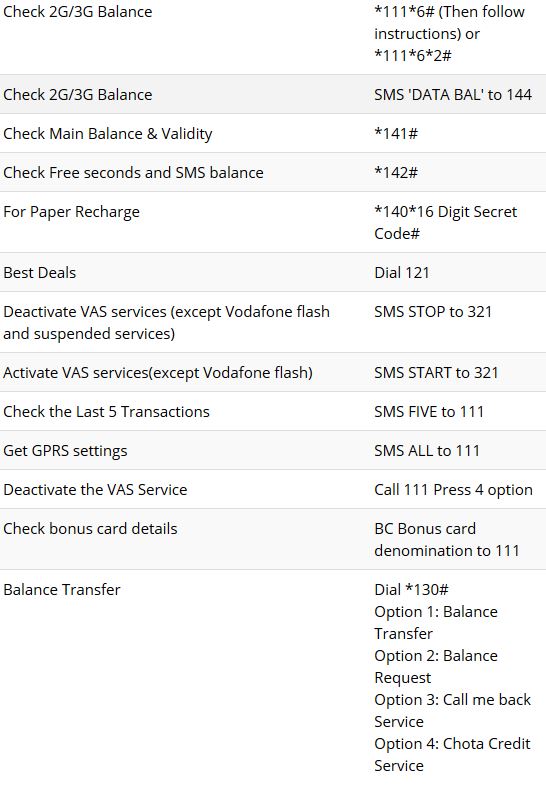That dreaded buffering wheel. The video call that looks like a pixelated slideshow. The game update inching along slower than a snail on a lazy Sunday. We’ve all been there, haven’t we? That frustrating moment when your internet feels like it’s wading through treacle. The culprit, more often than not, is something called bandwidth. But what on earth is it? You might have heard it compared to a pipe, and honestly, that’s a fantastic place to start.
Table of Contents
Uncorking the Mystery: What Exactly is Bandwidth? (The Pipe Metaphor)
Imagine your internet connection is a water pipe. The amount of water that can flow through that pipe at any given moment is its capacity. Bandwidth is precisely that for your internet – it’s the maximum amount of data that can be transferred over your internet connection in a specific amount of time, usually measured in seconds.
So, if your internet connection is a pipe:
- A narrow pipe (low bandwidth) means only a small amount of data can ‘flow’ through at once. This leads to slow loading times, buffering videos (ugh!), and laggy online games. It’s like trying to fill a swimming pool with a garden hose.
- A wide pipe (high bandwidth) allows a large volume of data to ‘whoosh’ through simultaneously. This means smooth streaming, fast downloads, responsive gaming, and generally a much happier online experience. Think of a fire hose for that swimming pool – much better!
Essentially, more bandwidth means more ‘lanes’ on your digital highway, allowing more traffic (data) to pass through without congestion.
And if you’re a visual learner, or just fancy a super-quick animated take on this whole ‘pipe’ business, we’ve actually whipped up a little something that might just ‘unclog’ your understanding even further. Hit play below!
Beyond the Basics: Measuring Your Digital Flow (Mbps, Gbps, and All That Jazz)
Bandwidth is typically measured in bits per second (bps). Since modern internet connections handle a lot of data, you’ll more commonly see these units:
- Kbps (Kilobits per second): Thousands of bits per second. Mostly a relic of dial-up days, but still used for some very low-demand connections.
- Mbps (Megabits per second): Millions of bits per second. This is the most common measurement for consumer internet plans (e.g., 50 Mbps, 100 Mbps, 500 Mbps).
- Gbps (Gigabits per second): Billions of bits per second. Increasingly common for high-speed fiber optic connections, offering incredibly fast data transfer.
It’s important not to confuse Megabits (Mb) with MegaBytes (MB). One Byte is equal to eight bits. So, a 100 Mbps connection can theoretically download 12.5 MegaBytes of data per second (100 Mb / 8 = 12.5 MB).

Bandwidth vs. Speed (Latency): The Tortoise and the Hare?
This is a common point of confusion! While related, bandwidth and internet “speed” (more accurately, latency) aren’t the same thing.
- Bandwidth is the amount of data that can be transferred. It’s the width of the pipe.
- Latency (often referred to as ‘ping’) is the delay it takes for data to travel from its source to you and back. It’s how quickly the water starts flowing once you turn on the tap, regardless of pipe size.
You can have high bandwidth but still experience lag if your latency is high. For example, if you’re gaming and connect to a server on the other side of the world, the data has a long physical distance to travel, increasing latency, even if you have a massive bandwidth pipe. Low latency is crucial for real-time applications like online gaming and video conferencing.
The Two-Way Street: Download vs. Upload Bandwidth
Most internet plans, especially non-fiber ones, are asymmetrical. This means your download bandwidth is significantly higher than your upload bandwidth.
- Download Bandwidth: The capacity for data coming to your devices from the internet (e.g., streaming movies, browsing websites, downloading files).
- Upload Bandwidth: The capacity for data going from your devices to the internet (e.g., sending large email attachments, video calling, backing up files to the cloud, live streaming).
For most users, download activities are more frequent, so higher download bandwidth is prioritized by ISPs. However, with the rise of video conferencing, content creation, and cloud storage, adequate upload bandwidth is becoming increasingly important.

Who’s Drinking All the Bandwidth? Common Culprits
Ever wonder why your connection slows to a crawl at certain times? Various online activities consume different amounts of bandwidth:
Streaming Services: The Thirsty Giants
Streaming video, especially in High Definition (HD), 4K, or even 8K, is one of the biggest bandwidth consumers. A single 4K stream can use 25 Mbps or more!
Online Gaming: Every Millisecond Counts
While gaming itself might not use as much continuous bandwidth as 4K streaming, it requires consistent, low-latency bandwidth. Game downloads and updates, however, can be massive and take a big gulp from your data pipe.
Large File Downloads & Uploads
Downloading software, operating system updates, or large media files obviously uses significant bandwidth. Similarly, uploading high-resolution photos and videos to social media or cloud storage can saturate your upload capacity.
The Multi-Device Household
These days, it’s not just one computer. It’s smartphones, tablets, smart TVs, gaming consoles, smart home devices – all potentially vying for a slice of your internet bandwidth pie simultaneously. The more active devices, the wider your ‘pipe’ needs to be.

How Much Bandwidth Do You Really Need? (A Rough Guide)
The “right” amount of bandwidth depends entirely on your usage. Here are some general guidelines:
- Casual Surfing & Email (1-5 Mbps): Basic web browsing, email, and social media don’t require much.
- HD Streaming (5-10 Mbps per stream): For smooth Netflix in HD on one device.
- 4K Streaming (25+ Mbps per stream): Essential for crisp ultra-HD content.
- Online Gaming (3-6 Mbps per device, but low latency is key): Bandwidth needs are moderate, but stability and low ping are paramount. Large game downloads will benefit from higher bandwidth.
- Working From Home & Video Conferencing (5-10 Mbps upload/download): Reliable video calls need decent symmetrical (or near-symmetrical) bandwidth.
Remember to sum up the needs of all users and devices in your household that might be active at the same time. If you have multiple 4K streamers and a gamer, you’ll need a plan that can comfortably accommodate that combined load.
Is Your Pipe Clogged? Factors That Can Reduce Your Effective Bandwidth
Sometimes, even if you pay for a high-bandwidth plan, your actual speeds might feel slower. Here’s why:
Your Internet Plan
This is the most obvious: you get the maximum bandwidth you pay for from your Internet Service Provider (ISP). If your plan is for 50 Mbps, you won’t get 100 Mbps.
Your Router & Equipment
An old or underpowered router can be a significant bottleneck. If your router can’t handle the speeds your plan provides, or if its Wi-Fi capabilities are outdated (e.g., using an older Wi-Fi standard like 802.11g instead of Wi-Fi 5, 6, or 6E), it will limit your effective bandwidth.
Network Congestion (The Digital Traffic Jam)
Like a real highway, the internet can get congested. During peak hours (evenings, weekends), when many people in your neighborhood are online, you might experience slower speeds as everyone shares the local network infrastructure.

Wi-Fi Interference
Wireless signals can be affected by physical obstructions (walls, furniture) and interference from other electronic devices (microwaves, Bluetooth devices, neighbors’ Wi-Fi networks). This can reduce your Wi-Fi speed and, consequently, your perceived bandwidth.
Checking Your Flow: How to Test Your Bandwidth
Curious about your current internet pipe’s width? You can easily test your bandwidth using online speed test tools. Websites like Speedtest.net by Ookla, Fast.com (powered by Netflix), or Google’s own speed test (just search “internet speed test”) can measure your download and upload speeds, as well as your latency (ping).
For the most accurate results, run the test on a computer connected directly to your router via an Ethernet cable, and ensure no other devices are heavily using the internet during the test.
So, Is Bigger Always Better? The Bandwidth Balancing Act
While it might seem like you should always opt for the highest bandwidth plan available, it’s about finding the right balance for your needs and budget. Paying for a gigabit connection when you only browse the web and check emails is like owning a Ferrari just to drive to the local grocery store – overkill, and costly!
Assess your household’s typical internet usage, consider the number of connected devices, and factor in your future needs. Sometimes, a moderate plan with a good quality router and optimized home network setup is more effective than an ultra-high-speed plan plagued by Wi-Fi issues.
Keeping Your Digital Waterways Clear
Understanding bandwidth is the first step to diagnosing and solving many common internet woes. By grasping the pipe metaphor – recognizing how much data your connection can handle – you’re better equipped to choose the right internet plan, troubleshoot slowdowns, and ensure your online experience is as smooth and frustration-free as possible. So, go forth and ensure your digital pipes are wide enough for your data streams to flow freely!




